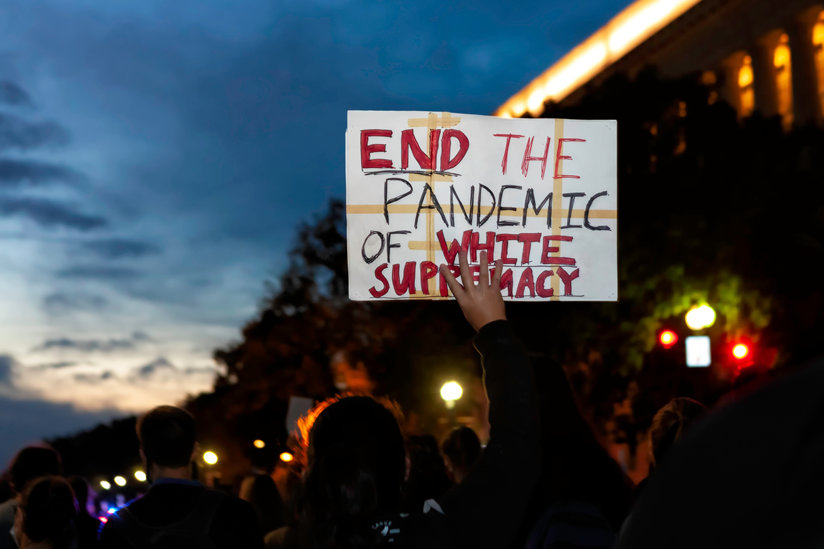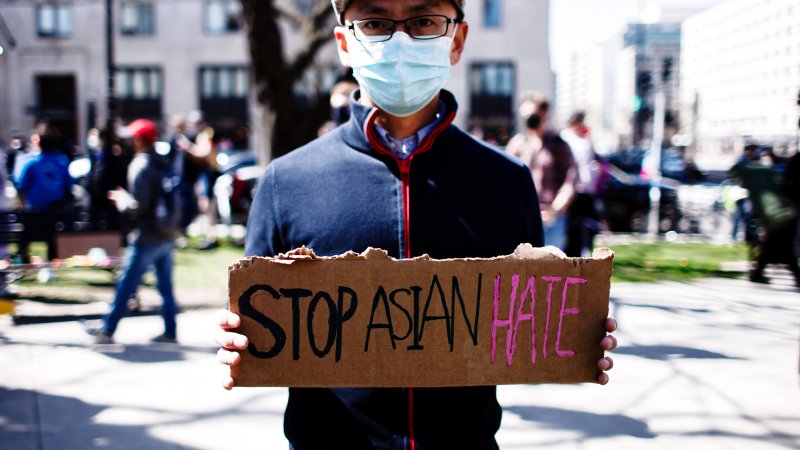
-
HOME
-
WHAT IS STANDOur Mission Our Values Our Help Contact
-
WHAT WE FIGHT FORReligious Freedom Religious Literacy Equality & Human Rights Inclusion & Respect Free Speech Responsible Journalism Corporate Accountability
-
RESOURCESExpert Studies Landmark Decisions White Papers FAQs David Miscavige Religious Freedom Resource Center Freedom of Religion & Human Rights Topic Index Priest-Penitent Privilege Islamophobia
-
HATE MONITORBiased Media Propagandists Hatemongers False Experts Hate Monitor Blog
-
NEWSROOMNews Media Watch Videos Blog
-
TAKE ACTIONCombat Hate & Discrimination Champion Freedom of Religion Demand Accountability
The Different Shades of White Supremacy
White supremacy is a chameleon and has shape-shifted to accommodate the times.
It’s why there’s no easy way to identify or isolate white supremacists the way Jews in Nazi Germany were made to wear yellow Stars of David to warn others to keep their distance, lest they get contaminated.
Two hundred years ago when one out of every seven human beings in America was owned by another human being, white supremacy had no stigma. Far from it. You’d be in the distinct minority not to subscribe to the tenet that the white man had the sacred duty of subjugating and holding dominion over the non-fair-skinned races of earth. White supremacy, under different names (“the white man’s burden,” “Manifest Destiny,” “eugenics,” “ethnic cleansing,” to name a few) was the basis for colonialism, the slave trade, Jim Crow laws, apartheid, the Trail of Tears, the Final Solution, and much of the grief and suspicion that plagues mankind to this day.

The alarming truth is that such hate does not dissolve with time. On the contrary, it’s an equal-opportunity taskmaster, and white supremacy has been with us for a long, long time. It has shifted with the passing modes of fashion and style, always nonpolitical, while pretending to be political; always immoral, while pretending to align with the loftiest moral goals; always seeking to misdirect the spirit of the times while pretending to reflect it. The only variation through the ages has been its volume-control knob. When the times call for harmony, overt white supremacy retreats into the fringes and shadows, its knob turned down low, present among the bulk of us only in polite conversation, sidelong glances, disapproving clucks. And when the times call for something else, white supremacy tends to turn its volume up.
The alarming truth is that hate does not dissolve with time.
Though the extremists among the ordinary participants at the Capitol on January 6 waved different banners, bore different insignia and screamed different canards, they subscribed to that same cult, white supremacy, and they displayed their hate with pride and passion. Some wore t-shirts with crusader crosses emblazoned “Deus Vult” (God wills it) to channel the Crusades to the Holy Land against Muslims and Jews. Others waved the Kek flag—a sort of green Nazi war flag which replaces the swastika with the Kek symbol—an ensign loosely representing chaos and destruction unleashed by dark forces. The Confederate flag was also in evidence inside and on the Capitol grounds, getting closer to the seat of government than that racist flag ever got during the Civil War.
Hate and bigotry, in fact, were present in such variety and abundance that the Jewish Telegraph Agency published a guide to understanding the more prominent white supremacist signs and dog whistles present that day, like the infamous “Camp Auschwitz” sweatshirt.

What we saw in those flags and on those t-shirts forced us to confront several unpleasant truths: that hate exists with alarming continuity, and always has; that white supremacy has moved to prominence as the bigotry of choice in America today; and finally, that we need to do everything possible to stop this, and every form of hate, before the “polite people” become shatterers of windows and ruiners of lives. It is oh so easy to whisper “yeah!” when one can blend in with a crowd and not stand alone as an individual voice. It is oh so easy, and has been throughout history, to go along, flow along, become the current rather than the riptide. And so one, too, can become a chameleon, altering one’s colors to suit one’s friends and one’s time—which is why it is time for all of us, regardless of party, politics, ideology or anything else, to take a long look at our agreements, at what we’re willing to “go along with,” blend in with, condone, or look away from.
It can be comforting and comfortable to share the same private snickers and public derisions as one’s friends about everything from a person’s skin color to their religion. One can then slip into the hates and fears of their associates as easily as one would into a pair of well-worn loafers. It’s then a short path from private hate to hateful slogans, to pride in the hateful slogans, to carrying out the implied action built into those hateful slogans. There is less distance than most of us would like to believe from narrow-mindedness to mindless outrage, from polite conversation to hate speech, from snubbing the new neighbors to killing them.
It takes confront, and possibly a reshuffling of what we have taken for granted—things we were possibly even born with, raised with, lived by and believed were the touchstones of being a good person—to maintain enough integrity, breadth of perspective and alertness to perceive when we are being gently, even pleasantly, led down the path to hate.
It may not look like it did in the 19th century, nor even in the 20th century. But the chameleon is still with us.
And only you and I can kill it.









